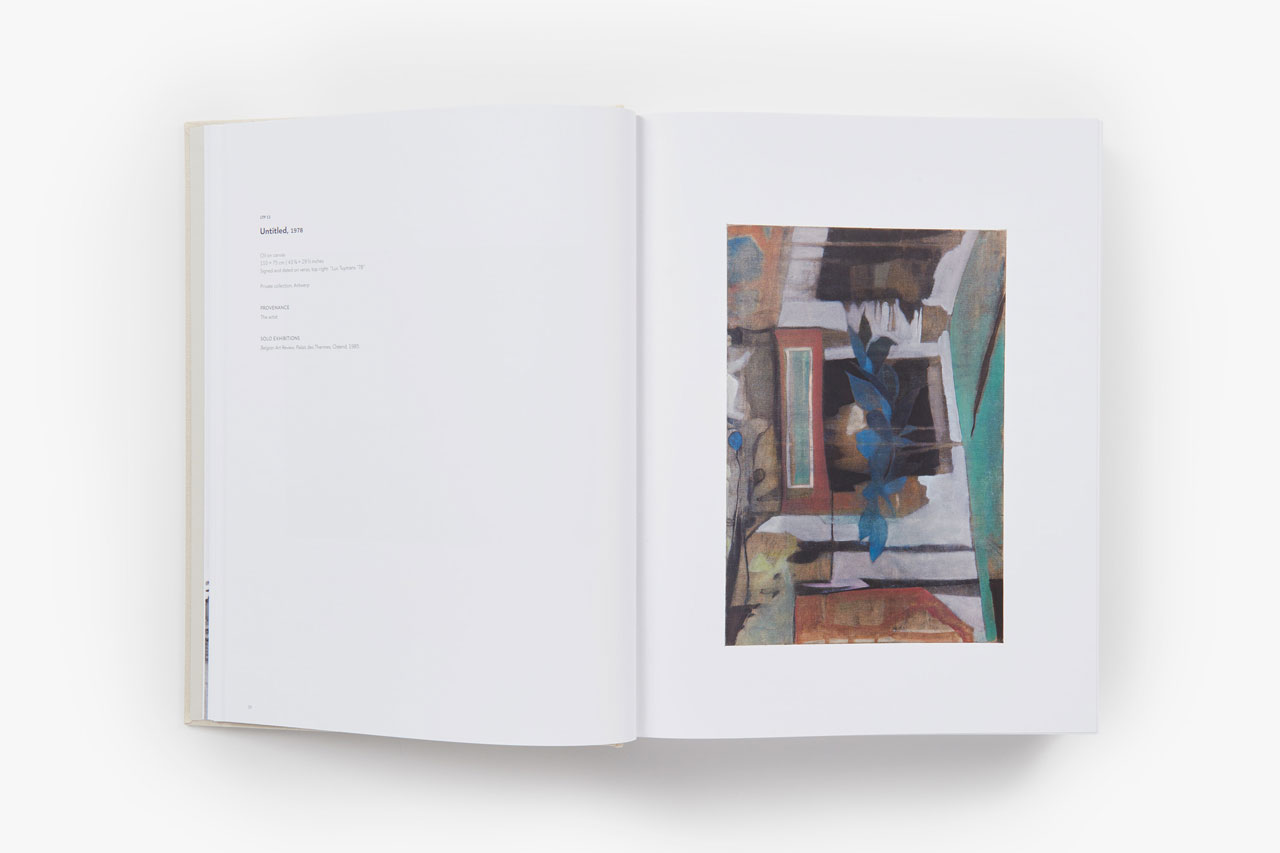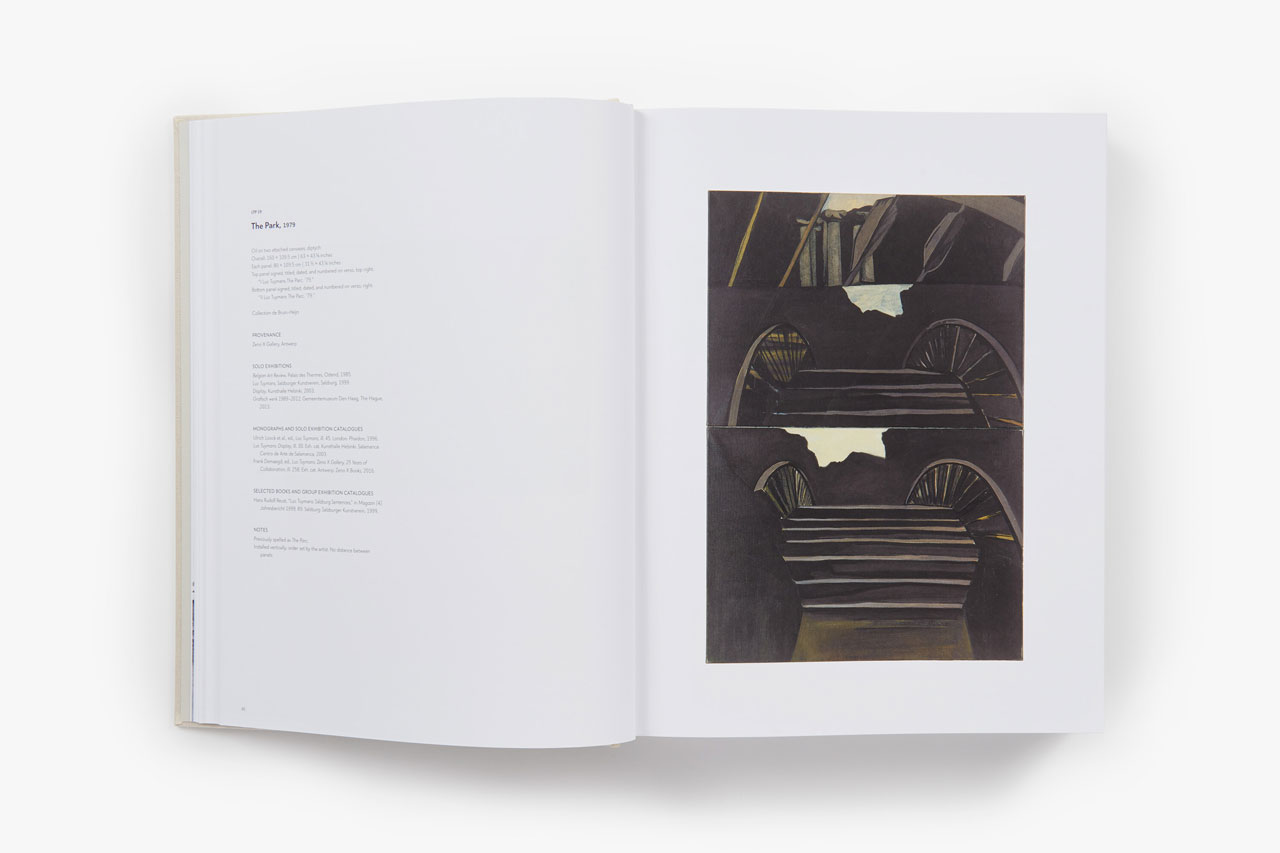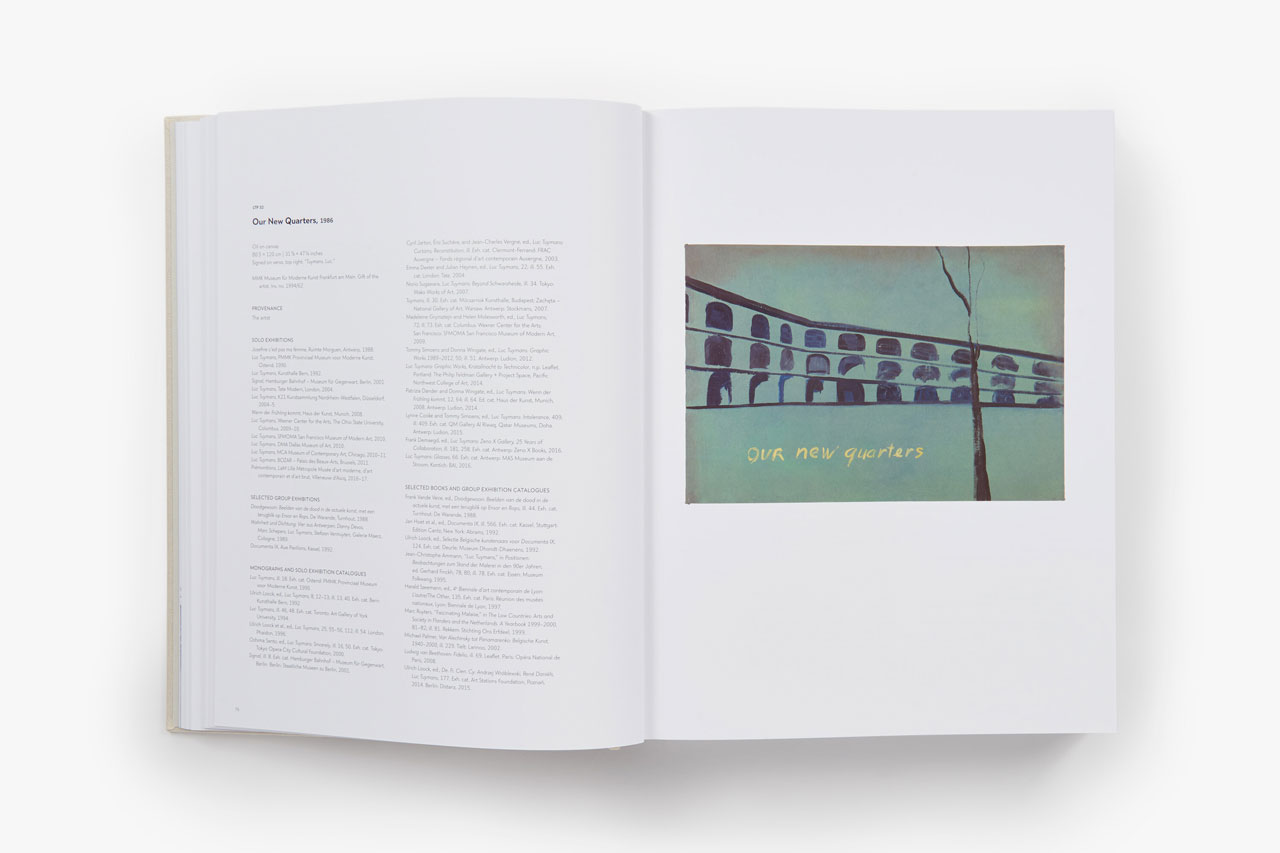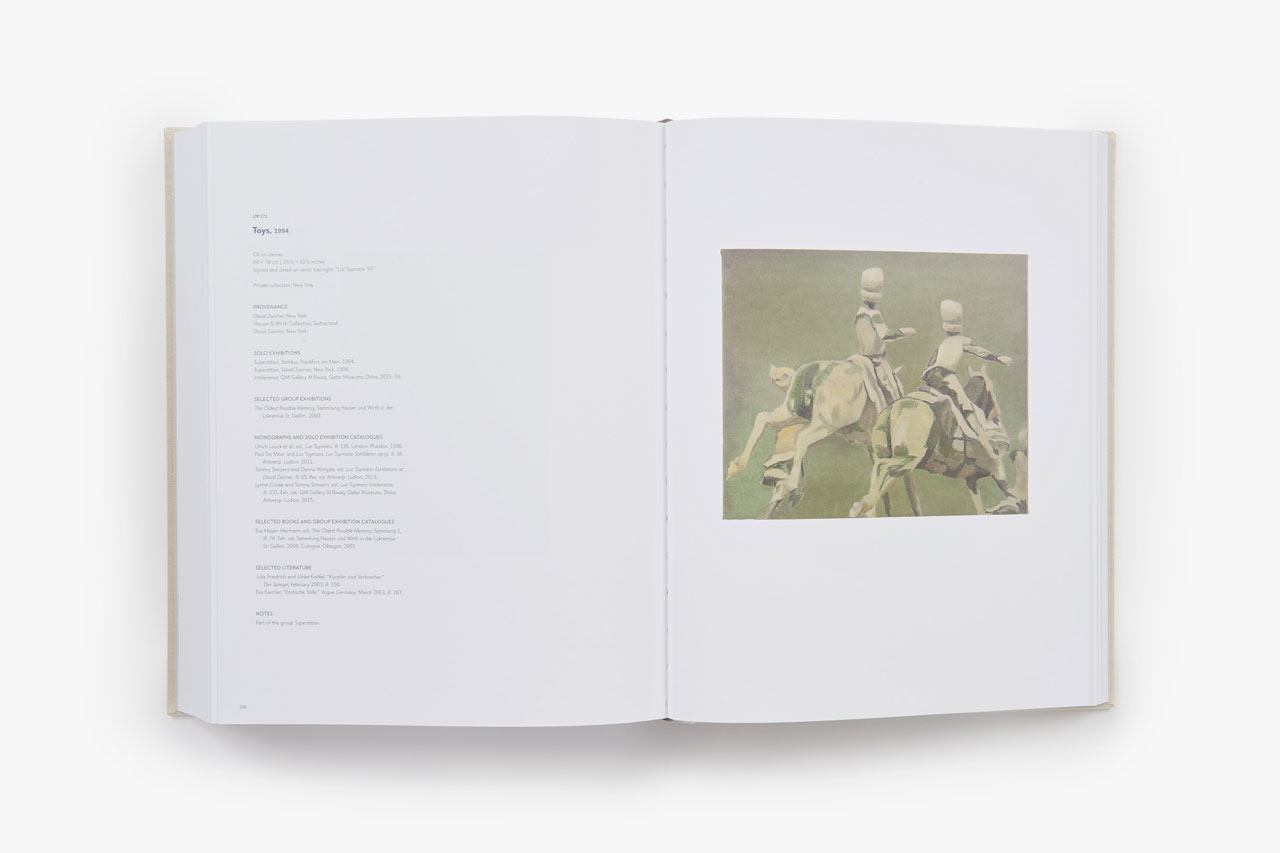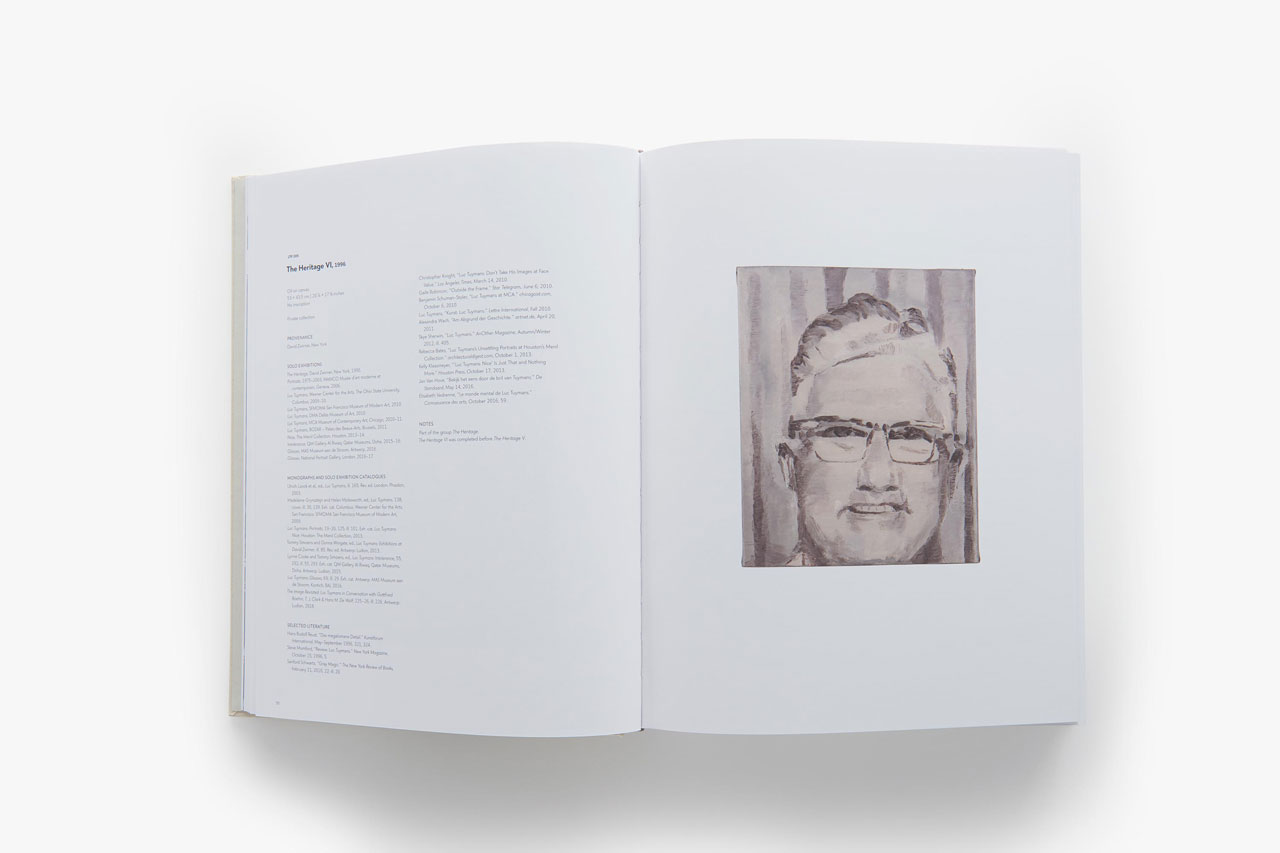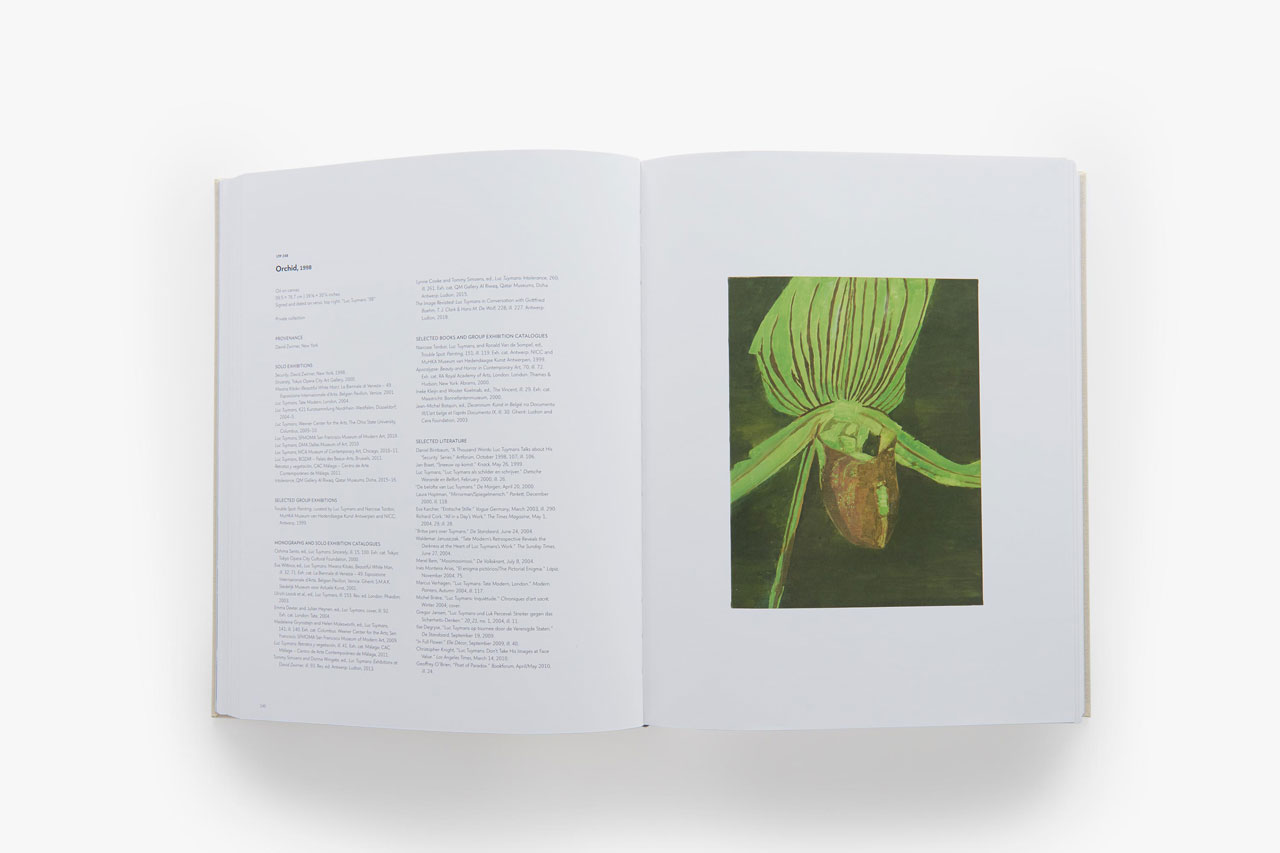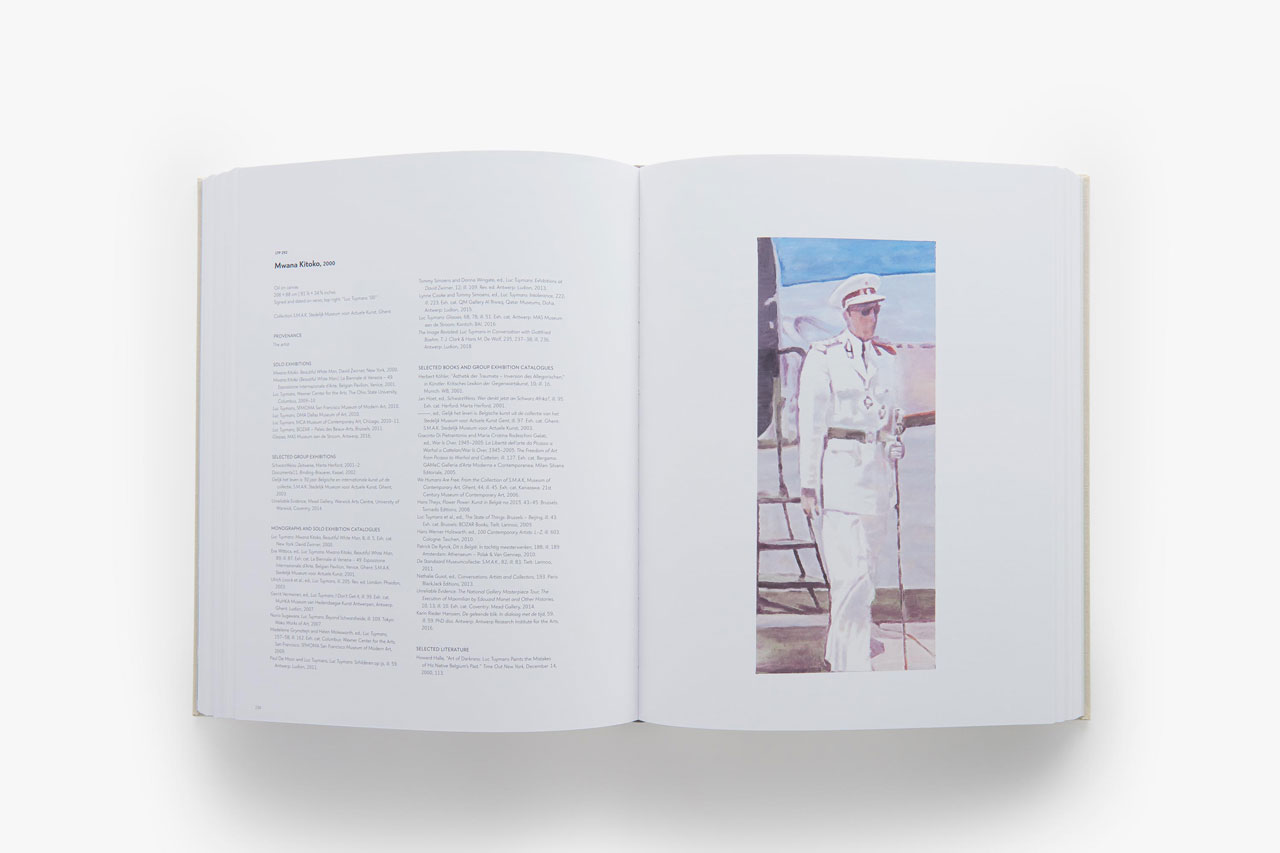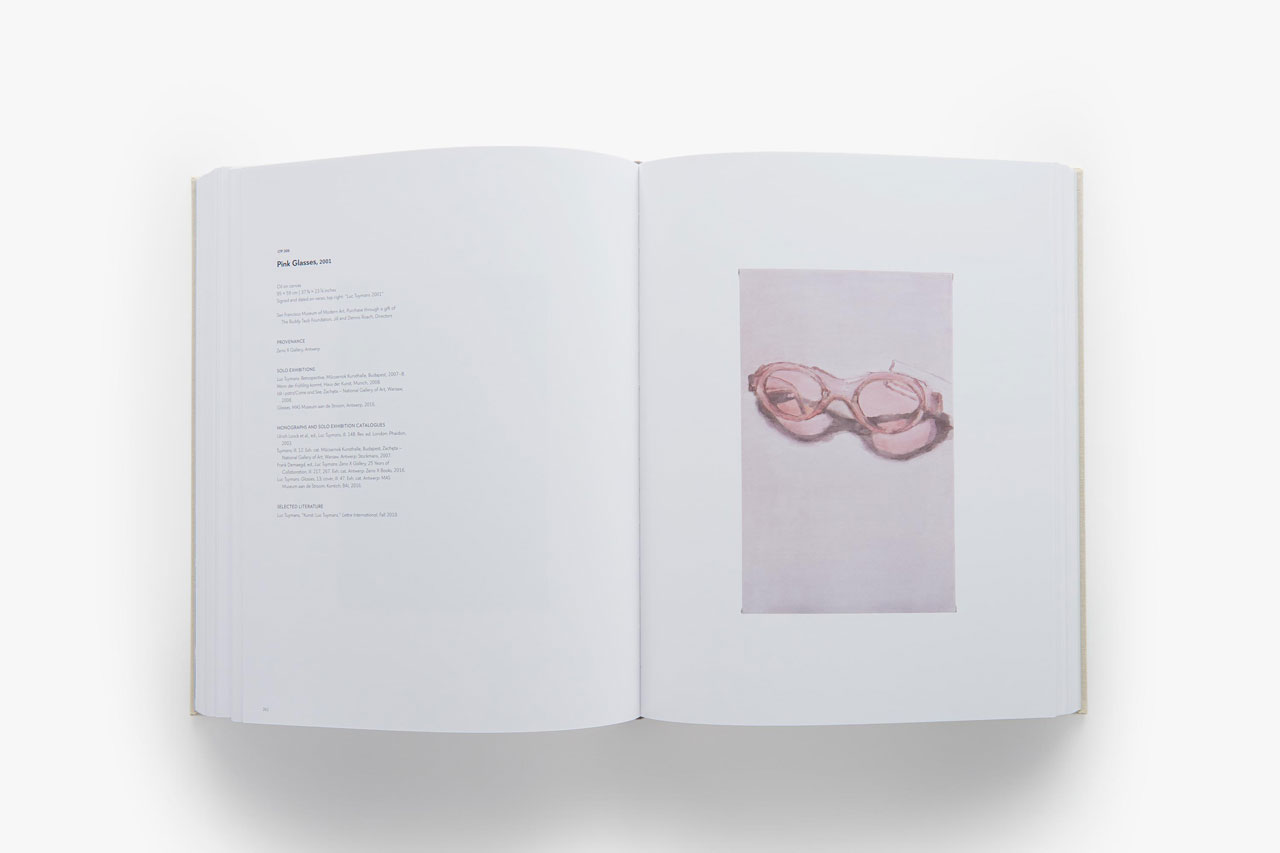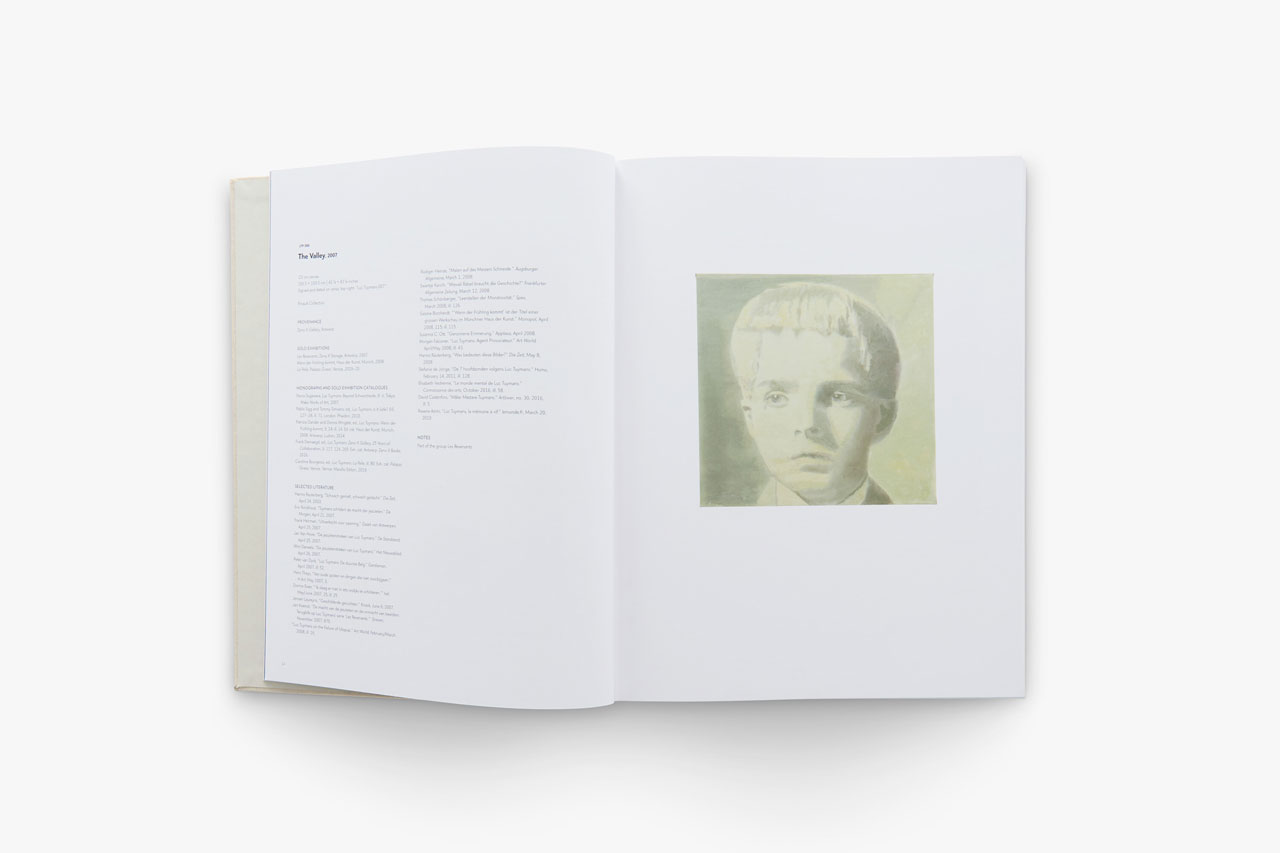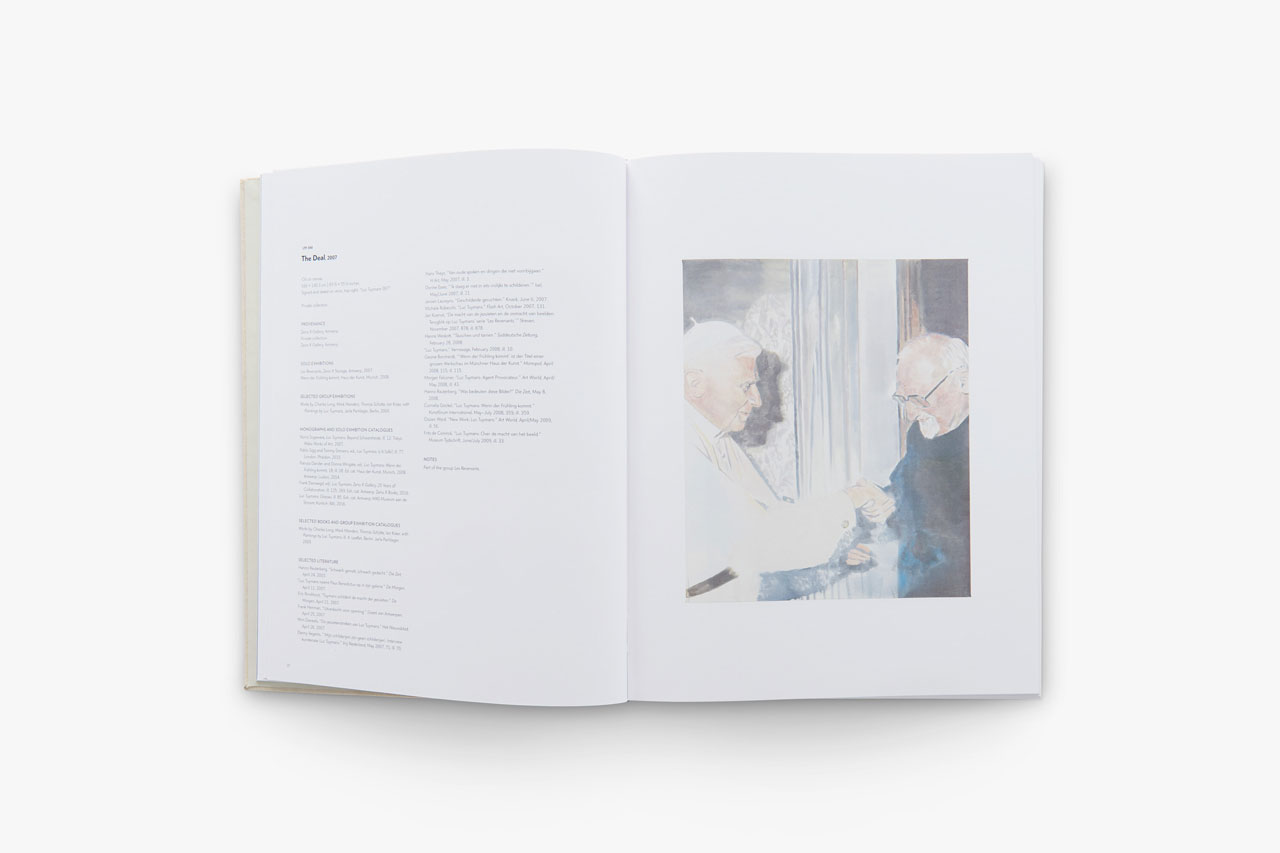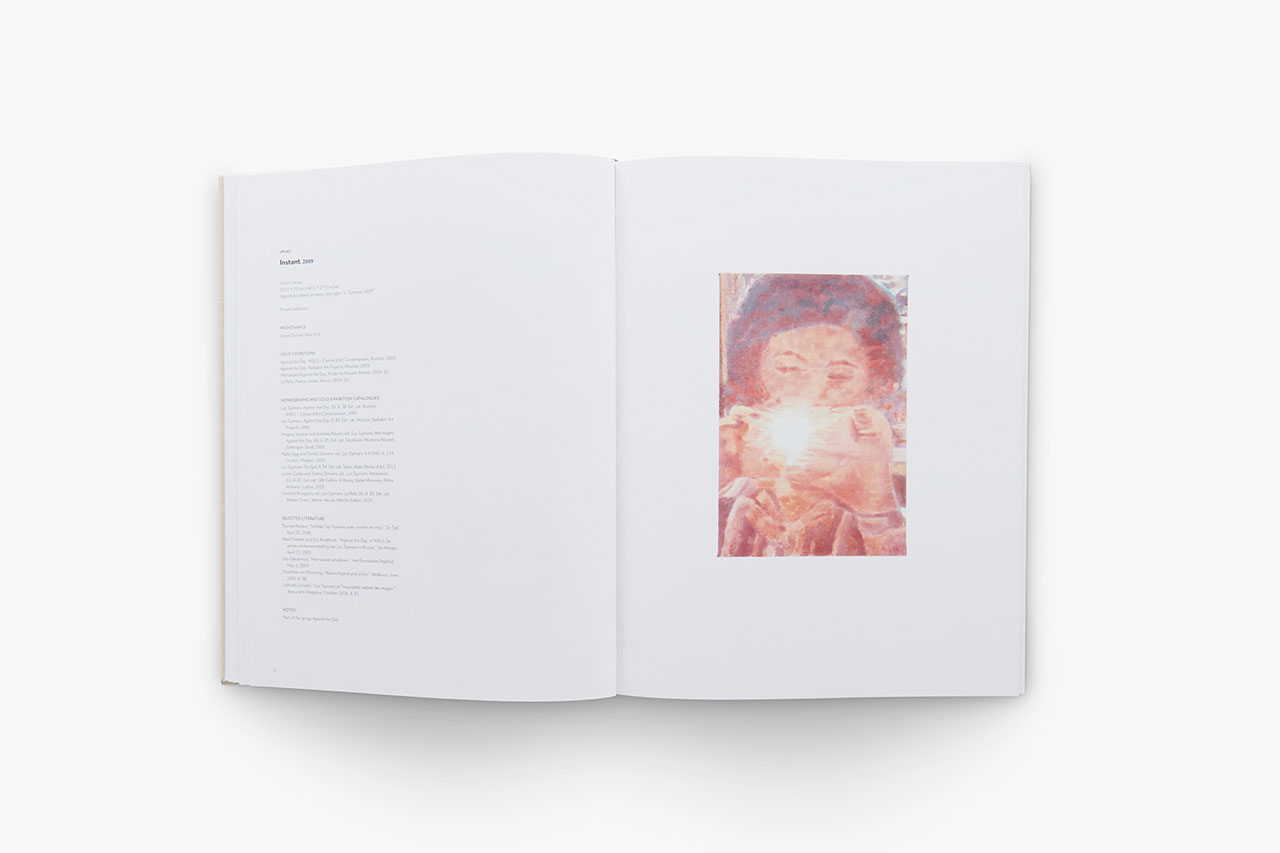BOOK: Luc Tuymans-Catalogue Raisonné of Paintings: Vol. 1–3, David Zwirner Books
 One of the most important painters working today, Luc Tuymans pioneered a distinctive style of figurative painting beginning in the 1980s that has been singularly influential to his peers as well as subsequent generations of artists. Tuymans’s deeply resonant compositions insist on the power of images to simultaneously reveal and withhold meaning. From his generative early work to his most iconic canvases, the catalogue raisonné charts the artist’s investigation into painting’s relationship to history and technology. The signed “Catalogue Raisonné of Paintings: Volume 1–3”, by David Zwirner Books, surveys Tuymans’s oeuvre of nearly six hundred works, made between 1972 and 2018. Each painting is illustrated and features its full exhibition history and literature notations. Each volume includes a comprehensive illustrated chronology, highlighting major projects, public commissions, discussions and events, and exhibitions. Vol I (1972–1994): Credited with a key role in the revival of painting in the 1990s, Tuymans continues to produce subtle, and at times unsettling, works that engage with history, technology, and everyday life. This first volume in a catalogue raisonné of Tuymans’s paintings surveys nearly two hundred works that were vital to his artistic development. The years 1972 to 1994 witnessed the maturation of his signature method of painting from preexisting imagery—such as magazine images, Polaroids, and television footage—as well as his first solo exhibitions. Vol II (1995-2006): Between the years 1995 and 2006, Tuymans’s work trended toward ideas of national and collective memory. In 1996, the artist created a group of ten paintings entitled “The Heritage”, for which he transformed familiar images of American life, such as Mount Rushmore, baseball caps, and the United States flag, into unsettling visions, addressing the country’s perceived vulnerability, both physical and psychological, following the 1995 Oklahoma City bombing. Paintings from “Mwana Kitoko: Beautiful White Man”, his seminal body of work that was first shown at David Zwirner, New York, in 2000, after which he expanded the series for his presentation for the Belgian Pavilion at the Venice Biennale in 2001, depict imagery derived from the fraught history of Belgian colonial rule of the Democratic Republic of the Congo. Also included is one of Tuymans’s best-known paintings, “The Secretary of State” (2005), a powerful yet seemingly vulnerable portrayal of Condoleezza Rice, which conjures the long history of racial and sexual prejudice in the United States, not as something that has been overcome, but as an active force shaping our reality. Vol. III (2007-2018): The works in this volume, made between 2007 to 2018, show Tuymans at his most virtuosic, subtly but provocatively addressing a range of topics including religion, corporatization, and cultural memory, in addition to modernism and the history of painting. The internet, in particular, is central to these works as is the screen—leading to a new style of contemporary image. The works are mediatized to the nth degree, despite the artist’s continuous use of the traditional medium of painting. There is a certain kind of light that comes out of a screen, which can be found in Tuymans’s recent paintings.-Dimitris Lempesis
One of the most important painters working today, Luc Tuymans pioneered a distinctive style of figurative painting beginning in the 1980s that has been singularly influential to his peers as well as subsequent generations of artists. Tuymans’s deeply resonant compositions insist on the power of images to simultaneously reveal and withhold meaning. From his generative early work to his most iconic canvases, the catalogue raisonné charts the artist’s investigation into painting’s relationship to history and technology. The signed “Catalogue Raisonné of Paintings: Volume 1–3”, by David Zwirner Books, surveys Tuymans’s oeuvre of nearly six hundred works, made between 1972 and 2018. Each painting is illustrated and features its full exhibition history and literature notations. Each volume includes a comprehensive illustrated chronology, highlighting major projects, public commissions, discussions and events, and exhibitions. Vol I (1972–1994): Credited with a key role in the revival of painting in the 1990s, Tuymans continues to produce subtle, and at times unsettling, works that engage with history, technology, and everyday life. This first volume in a catalogue raisonné of Tuymans’s paintings surveys nearly two hundred works that were vital to his artistic development. The years 1972 to 1994 witnessed the maturation of his signature method of painting from preexisting imagery—such as magazine images, Polaroids, and television footage—as well as his first solo exhibitions. Vol II (1995-2006): Between the years 1995 and 2006, Tuymans’s work trended toward ideas of national and collective memory. In 1996, the artist created a group of ten paintings entitled “The Heritage”, for which he transformed familiar images of American life, such as Mount Rushmore, baseball caps, and the United States flag, into unsettling visions, addressing the country’s perceived vulnerability, both physical and psychological, following the 1995 Oklahoma City bombing. Paintings from “Mwana Kitoko: Beautiful White Man”, his seminal body of work that was first shown at David Zwirner, New York, in 2000, after which he expanded the series for his presentation for the Belgian Pavilion at the Venice Biennale in 2001, depict imagery derived from the fraught history of Belgian colonial rule of the Democratic Republic of the Congo. Also included is one of Tuymans’s best-known paintings, “The Secretary of State” (2005), a powerful yet seemingly vulnerable portrayal of Condoleezza Rice, which conjures the long history of racial and sexual prejudice in the United States, not as something that has been overcome, but as an active force shaping our reality. Vol. III (2007-2018): The works in this volume, made between 2007 to 2018, show Tuymans at his most virtuosic, subtly but provocatively addressing a range of topics including religion, corporatization, and cultural memory, in addition to modernism and the history of painting. The internet, in particular, is central to these works as is the screen—leading to a new style of contemporary image. The works are mediatized to the nth degree, despite the artist’s continuous use of the traditional medium of painting. There is a certain kind of light that comes out of a screen, which can be found in Tuymans’s recent paintings.-Dimitris Lempesis
